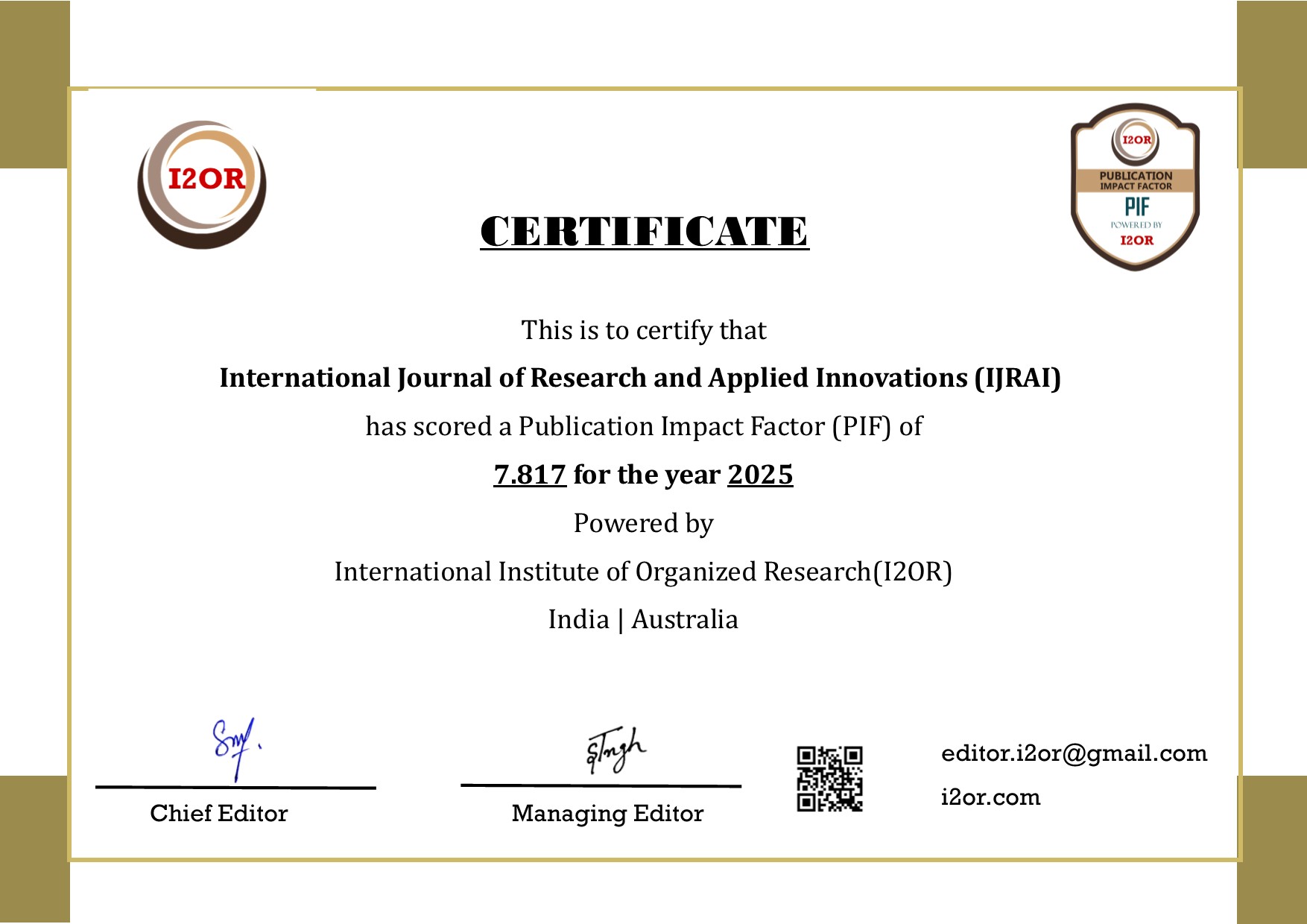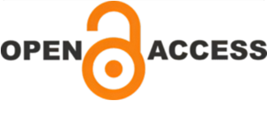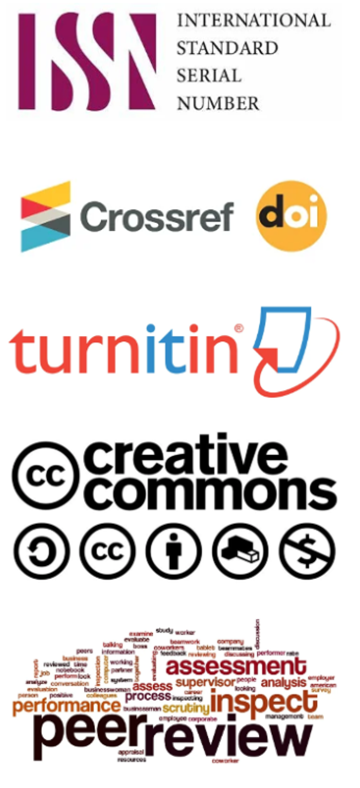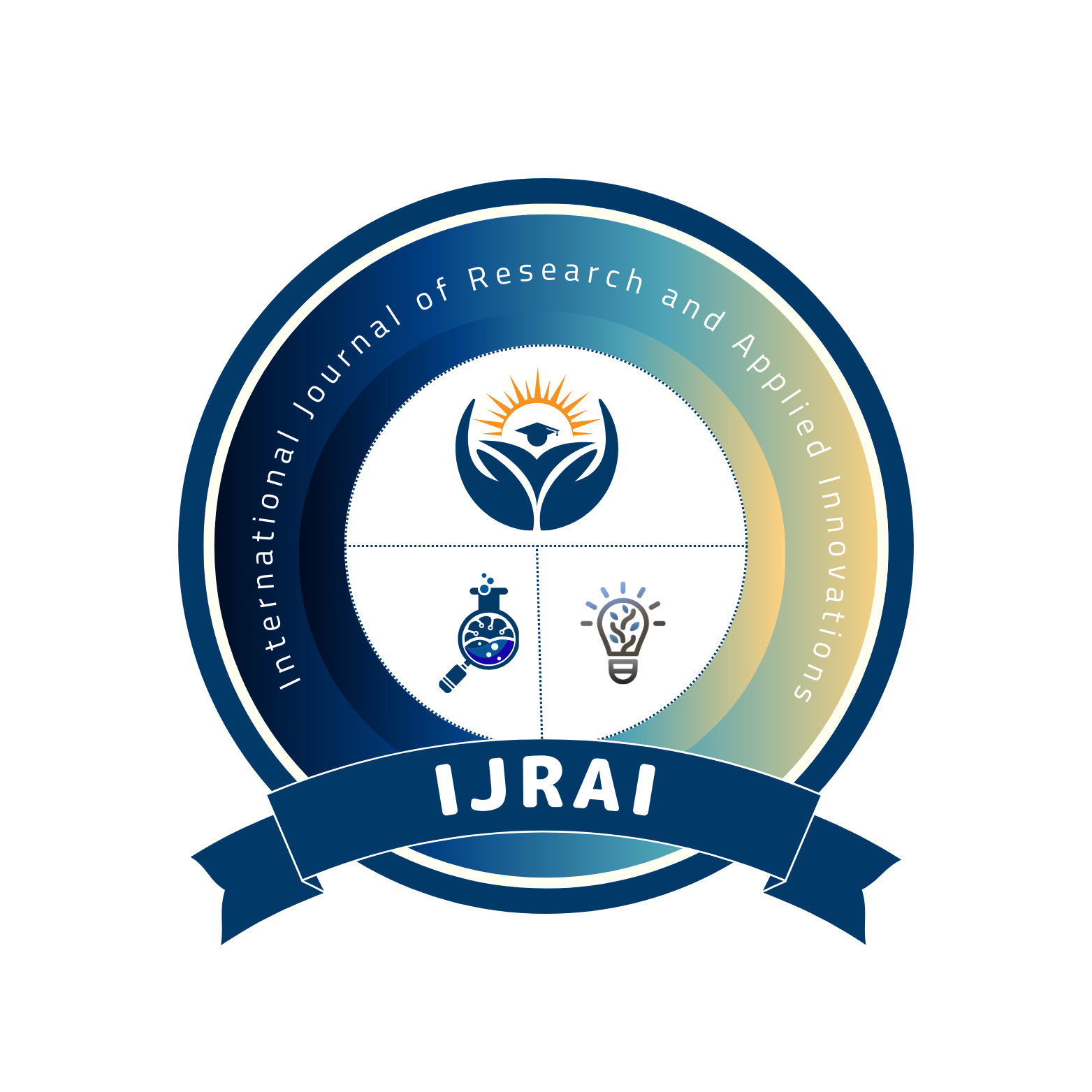AI-Enhanced Cloud Management and Digital Payment Ecosystem: Reinforcement Learning and Quantum Circuit Optimization in SAP S/4HANA Environments
DOI:
https://doi.org/10.15662/IJRAI.2025.0806009Keywords:
Artificial Intelligence (AI), Reinforcement Learning (RL), Quantum Circuit Optimization, SAP S/4HANA, Cloud Management, Digital Payments, Multi-Cloud Integration, BERT, Quantum Computing, Enterprise Resource Planning (ERP), Intelligent Automation, Cryptographic Optimization, Next-Generation Financial SystemsAbstract
The convergence of Artificial Intelligence (AI), cloud computing, and digital finance has transformed enterprise ecosystems into intelligent, adaptive, and data-driven infrastructures. This study proposes an AI-enhanced cloud management and digital payment framework that integrates Reinforcement Learning (RL) and Quantum Circuit Optimization within SAP S/4HANA environments. The proposed system leverages RL agents to dynamically allocate cloud resources, optimize transaction throughput, and minimize operational latency across multi-cloud architectures. Simultaneously, quantum-inspired optimization techniques are applied to accelerate payment encryption, fraud detection, and decision-making processes in high-frequency financial transactions.
Through the integration of BERT-based natural language understanding (NLU), the framework further enhances semantic data processing and intelligent automation within enterprise workflows. The hybrid AI–quantum approach facilitates real-time adaptability, cost efficiency, and heightened security in next-generation digital payment ecosystems. Experimental simulations demonstrate significant performance improvements in data integration speed, transaction reliability, and predictive accuracy compared to traditional cloud management methods. The results highlight the potential of combining Reinforcement Learning, Quantum Computing, and SAP S/4HANA for building future-ready, autonomous enterprise systems.
References
1. Esteva, A., Robicquet, A., Ramsundar, B., Kuleshov, V., DePristo, M., Chou, K., ... & Dean, J. (2019). A guide to deep learning in healthcare. Nature Medicine, 25(1), 24-29.
2. Balaji, P. C., & Sugumar, R. (2025, June). Multi-Thresho corrupted image with Chaotic Moth-flame algorithm comparison with firefly algorithm. In AIP Conference Proceedings (Vol. 3267, No. 1, p. 020179). AIP Publishing LLC.
3. Kondra, S., Raghavan, V., & kumar Adari, V. (2025). Beyond Text: Exploring Multimodal BERT Models. International Journal of Research Publications in Engineering, Technology and Management (IJRPETM), 8(1), 11764-11769.
4. Poornima, G., & Anand, L. (2025). Medical image fusion model using CT and MRI images based on dual scale weighted fusion based residual attention network with encoder-decoder architecture. Biomedical Signal Processing and Control, 108, 107932.
5. Christadoss, J., Panda, M. R., Samal, B. V., & Wali, G. (2025). Development of a Multi-Objective Optimisation Framework for Risk-Aware Fractional Investment Using Reinforcement Learning in Retail Finance. Futurity Proceedings, 3.
6. Arjunan, T., Arjunan, G., & Kumar, N. J. (2025, July). Optimizing the Quantum Circuit of Quantum K-Nearest Neighbors (QKNN) Using Hybrid Gradient Descent and Golden Eagle Optimization Algorithm. In 2025 International Conference on Computing Technologies & Data Communication (ICCTDC) (pp. 1-7). IEEE.
7. Choi, E., Schuetz, A., Stewart, W. F., & Sun, J. (2016). Using recurrent neural network models for early detection of heart failure onset. Journal of the American Medical Informatics Association, 24(2), 361-370.
8. Obermeyer, Z., & Emanuel, E. J. (2016). Predicting the future—big data, machine learning, and clinical medicine. The New England Journal of Medicine, 375(13), 1216-1219.
9. Shashikumar, S. P., Stanley, M., Sadiq, I., Li, Q., Holder, A., Clifford, G. D., & Nemati, S. (2020). Early prediction of sepsis from clinical data: the PhysioNet/Computing in Cardiology Challenge 2019. Critical Care Medicine, 48(2), 210-217.
10. Karanjkar, R., & Karanjkar, D. (2024). Optimizing Quality Assurance Resource Allocation in Multi Team Software Development Environments. International Journal of Technology, Management and Humanities, 10(04), 49-59.
11. Batchu, K. C. (2023). Cross-Platform ETL Federation: A Unified Interface for Multi-Cloud Data Integration. International Journal of Research Publications in Engineering, Technology and Management (IJRPETM), 6(6), 9632-9637.
12. Sajja, J. W., Komarina, G. B., & Choppa, N. K. R. (2025). The Convergence of Financial Efficiency and Sustainability in Enterprise Cloud Management. Journal of Computer Science and Technology Studies, 7(4), 964-992.
13. Jannatul, F., Md Saiful, I., Md, S., & Gul Maqsood, S. (2025). AI-Driven Investment Strategies Ethical Implications and Financial Performance in Volatile Markets. American Journal of Business Practice, 2(8), 21-51.
14. Manda, P. (2025). DISASTER RECOVERY BY DESIGN: BUILDING RESILIENT ORACLE DATABASE SYSTEMS IN CLOUD AND HYPERCONVERGED ENVIRONMENTS. International Journal of Research and Applied Innovations, 8(4), 12568-12579.
15. Liu, X., Faes, L., Kale, A. U., Wagner, S. K., Fu, D. J., Bruynseels, A., ... & Denniston, A. K. (2019). A comparison of deep learning performance against health-care professionals in detecting diseases from medical imaging: a systematic review and meta-analysis. The Lancet Digital Health, 1(6), e271-e297.
16. Sivaraju, P. S. (2024). PRIVATE CLOUD DATABASE CONSOLIDATION IN FINANCIAL SERVICES: A CASE STUDY OF DEUTSCHE BANK APAC MIGRATION. ITEGAM-Journal of Engineering and Technology for Industrial Applications (ITEGAM-JETIA).
17. Krishnapatnam, M. (2025). Next-Generation Identity Security in Healthcare: A Passkey-Based Approach. International Journal of Computing and Engineering, 7(3), 23-33.
18. Morley, J., Machado, C. C. V., Burr, C., Cowls, J., Joshi, I., Taddeo, M., & Floridi, L. (2020). The ethics of AI in health care: A mapping review. Social Science & Medicine, 260, 113172.
19. Thambireddy, S., Bussu, V. R. R., & Pasumarthi, A. (2022). Engineering Fail-Safe SAP Hana Operations in Enterprise Landscapes: How SUSE Extends Its Advanced High-Availability Framework to Deliver Seamless System Resilience, Automated Failover, and Continuous Business Continuity. International Journal of Research Publications in Engineering, Technology and Management (IJRPETM), 5(3), 6808-6816.
20. Zerine, I., Biswas, Y. A., Doha, Z., Meghla, H. M., & Polas, M. R. H. (2025). Understanding Behavioral Intentions to Use Cryptocurrency for the Future of Digital Finance: Evidence from Bangladesh. Journal of Comprehensive Business Administration Research.
21. Reddy, B. V. S., & Sugumar, R. (2025, June). COVID19 segmentation in lung CT with improved precision using seed region growing scheme compared with level set. In AIP Conference Proceedings (Vol. 3267, No. 1, p. 020154). AIP Publishing LLC.
22. Kumar, A., Anand, L., & Kannur, A. (2024, November). Optimized Learning Model for Brain-Computer Interface Using Electroencephalogram (EEG) for Neuroprosthetics Robotic Arm Design for Society 5.0. In 2024 International Conference on Computing, Semiconductor, Mechatronics, Intelligent Systems and Communications (COSMIC) (pp. 30-35). IEEE.
23. Adari, V. K. (2024). How Cloud Computing is Facilitating Interoperability in Banking and Finance. International Journal of Research Publications in Engineering, Technology and Management (IJRPETM), 7(6), 11465-11471.
24. Lähderanta, J., & Tönnis, M. (2018). Quantum computing for healthcare: applications and challenges. Journal of Healthcare Informatics Research, 2(4), 234-252.









